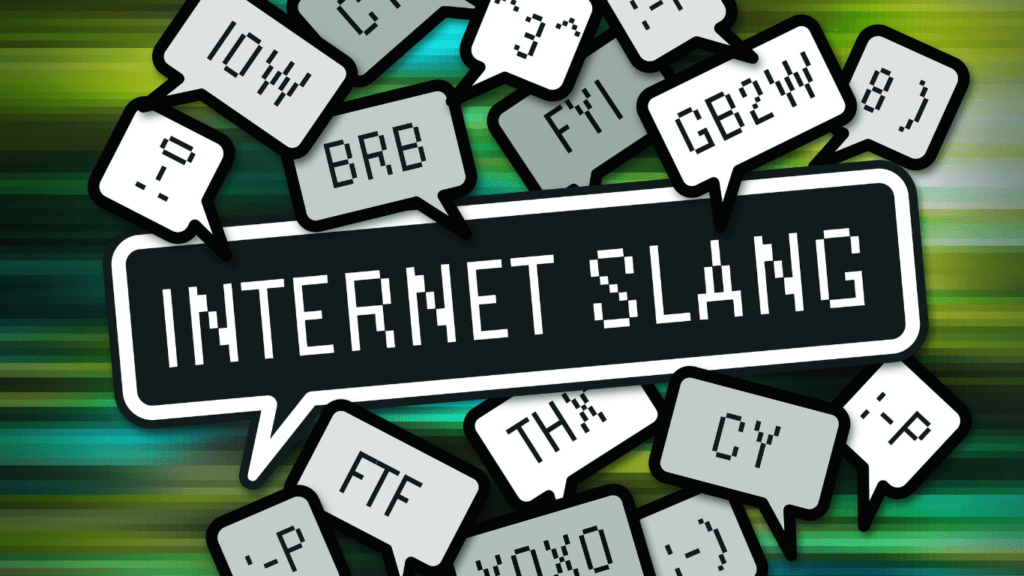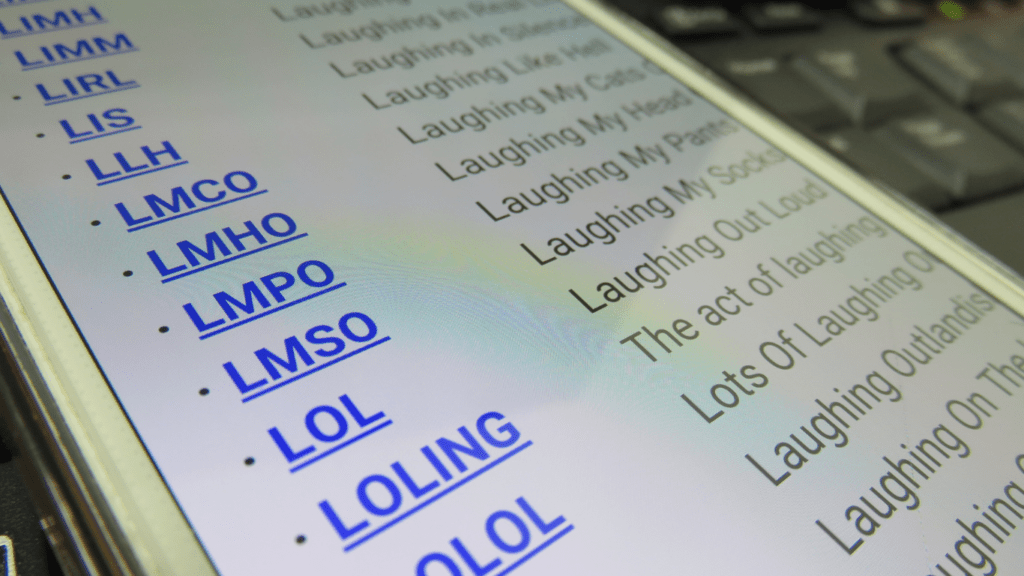The Rise of Internet Slang and Memes
Internet slang and memes have become integral to modern communication, reshaping how we convey ideas, humor, and emotions. Their rapid adoption stems from the internet’s evolution and the widespread use of digital platforms.
Origins of Digital Communication Trends
The roots of internet slang trace back to early online forums and chatrooms like Usenet and IRC in the 1980s. Users developed abbreviations like “LOL” (laugh out loud) and “BRB” (be right back) to communicate efficiently. Memes gained traction in the 2000s, with platforms like 4chan and Reddit becoming hotspots for cultural humor and viral imagery. The term “meme” itself, coined by evolutionary biologist Richard Dawkins in 1976, initially referred to cultural ideas transmitted over generations, later adapting to digital contexts.
Popular Platforms Driving Internet Culture
Social media platforms like Twitter, Instagram, and TikTok drive the spread of internet slang and memes. Twitter popularized hashtags and catchphrases, while TikTok’s short videos integrate memes into mainstream trends. Instagram contributes through visual meme formats like image macros (text-overlay photos). Forums like Reddit create niche communities where evolving memes and slang take root before reaching larger audiences. Messaging apps like WhatsApp and Discord incorporate emojis, GIFs, and stickers, enriching digital conversations with visual and linguistic shorthand.
The Role of Internet Slang in Shaping Modern Language

Internet slang significantly impacts the evolution of language, influencing how people express themselves in the digital age. It introduces new phrases, modifies existing words, and reflects shared online experiences.
Evolution of Everyday Vocabulary
Online slang changes everyday language by injecting creativity and efficiency into communication. Common abbreviations like “OMG” (Oh My God) and “ICYMI” (In Case You Missed It) transitioned from niche digital use to mainstream conversation. Social influencers and viral trends amplify this integration, turning informal expressions into normalized speech.
Phrases like “lit” (exciting or cool) and “sus” (suspicious) originated in specific subcultures but gained widespread recognition through platforms like Twitter and TikTok. Emojis and acronyms replace traditional sentence structures, making interactions concise yet emotive. These changes illustrate the dynamic nature of language, adapting to the speed and format of digital dialogues.
Bridging Generational and Cultural Gaps
Internet slang fosters connections between age groups and cultures by creating a shared digital lexicon. Gen Z terms like “no cap” (no lie) or “periodt” (definitive agreement) spread across multiple demographics when amplified by social media. Older generations adopt these phrases to engage with younger audiences, narrowing generational divides.
Culturally distinctive expressions gain global traction when memes or viral videos popularize them. For instance, Korean slang like “hwaiting” (encouragement) or Japanese terms like “kawaii” (cute) became familiar worldwide through digital content sharing. This cross-cultural exchange highlights the unifying power of internet slang as a communication tool in a globally connected society.
Memes as a Communication Tool
Memes function as a universal language in digital spaces, combining humor and relatability to convey messages concisely. These visual formats transcend linguistic barriers, making them effective for communication in the global online community.
The Power of Visual and Relatable Content
- Memes leverage images, GIFs, and videos to amplify messages and emotions.
- Their visual nature fosters quick comprehension, especially when paired with familiar cultural references, like popular TV shows or viral moments.
- The relatability of memes enables users to connect by sharing common experiences, such as workplace humor or relationships.
- Memes featuring phrases like “adulting is hard” resonate with younger audiences managing daily responsibilities.
- Their widespread appeal lies in their ability to succinctly capture complex feelings or ideas while providing entertainment.
Memes in Marketing and Political Discourse
Brands and politicians use memes to engage audiences and shape narratives. In marketing, companies like Wendy’s and Duolingo adopt meme-based strategies to build relatable and approachable public personas. Duolingo, for instance, uses humorous TikTok memes to connect with Gen Z audiences. Political campaigns use memes to simplify complex issues or promote candidates, as seen with Bernie Sanders’ viral “mittens meme” during the 2021 inauguration. Memes in these contexts increase engagement but also risk misinterpretation, as their humor depends on cultural awareness and context. The ability of memes to influence opinions makes them a critical tool in strategic online messaging.
Psychological and Social Impact
Internet slang and memes significantly affect how we connect, interpret, and experience communication in digital settings. They create shared understanding while highlighting the challenges of clarity in diverse online communities.
Fostering Connection Through Humor
Humor provided by memes and internet slang fosters community by creating shared cultural references. A meme like “Distracted Boyfriend” uses a single image to generate countless variations that appeal to people across different social groups. Such:
- humor bridges geographic
- generational
- cultural divides
forming bonds through collective laughter.
Internet slang also enhances these connections by enabling rapid, shorthand communication. Terms like “vibe check” or “it’s giving” instantly resonate with users familiar with their context, strengthening a sense of belonging. Shared humor and language create digital spaces where users feel understood and valued.
Risks of Miscommunication and Misinterpretation
Online slang and memes introduce risks when audiences lack context or cultural familiarity. For example, abbreviations like “FTW” might mean “For The Win” to one person but be misread as negative by someone unfamiliar with the term. Such gaps can lead to confusion and even conflict in online interactions.
Memes can also carry unintended messages when stripped of their cultural or situational contexts. The popular “Mocking SpongeBob” meme, originally humorous, has sometimes been used to mock marginalized viewpoints, sparking backlash. Misinterpretation can amplify misunderstandings, especially in diverse virtual spaces, emphasizing the need for context-awareness in digital communication.



